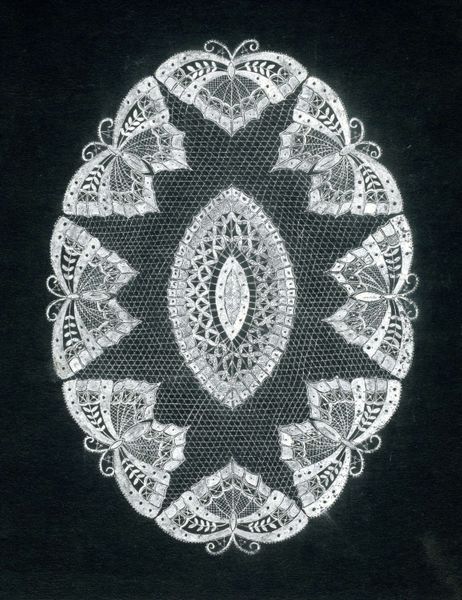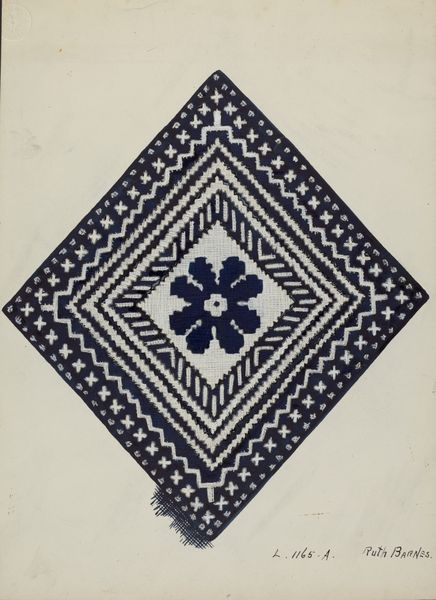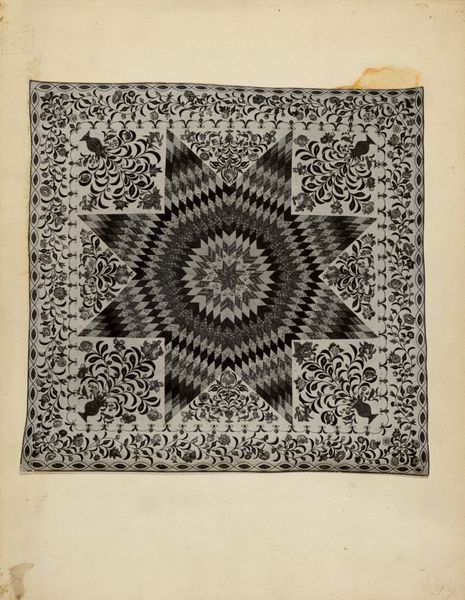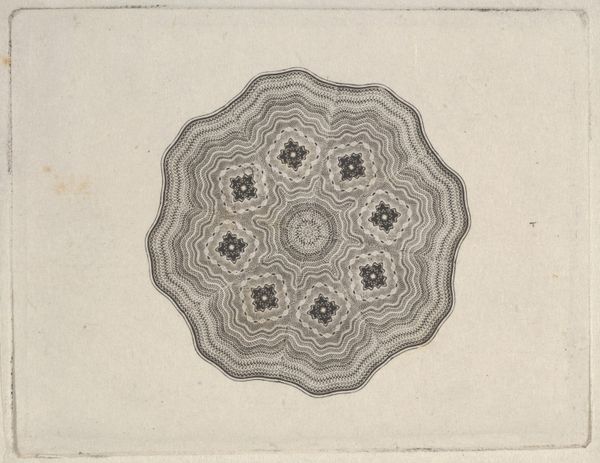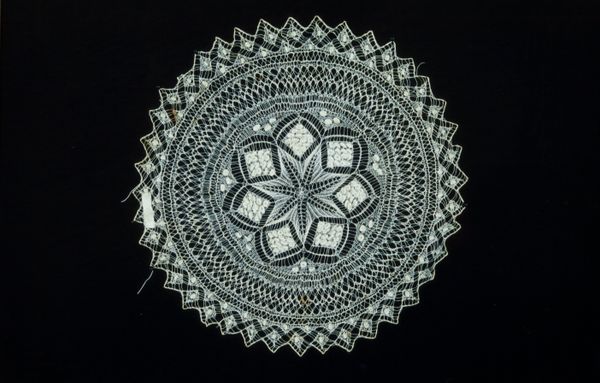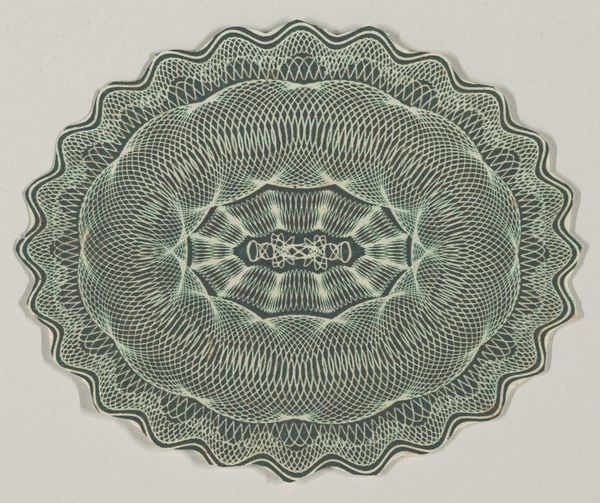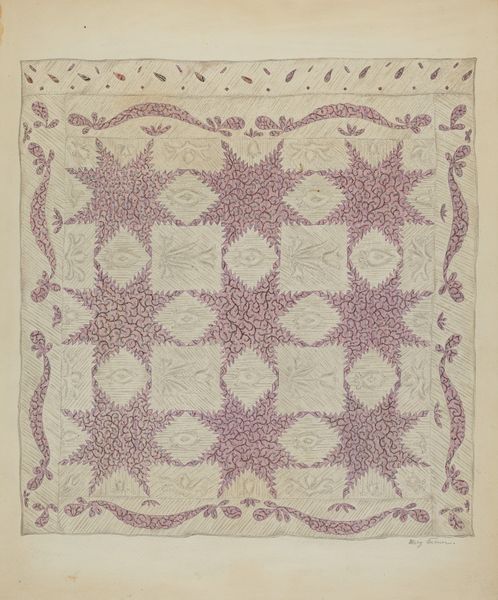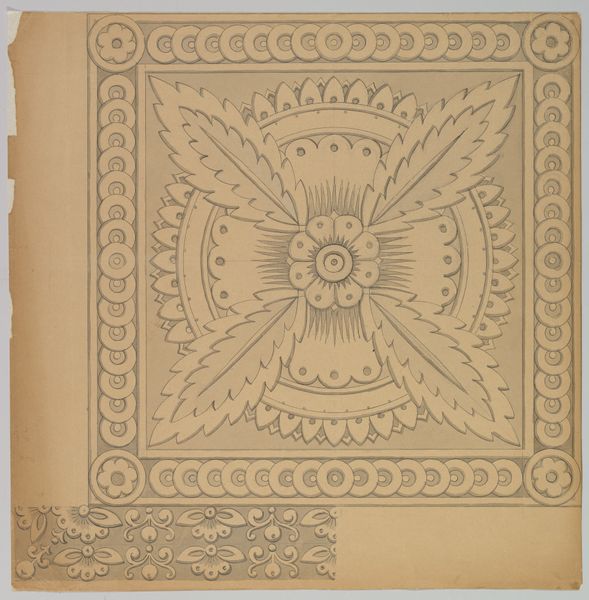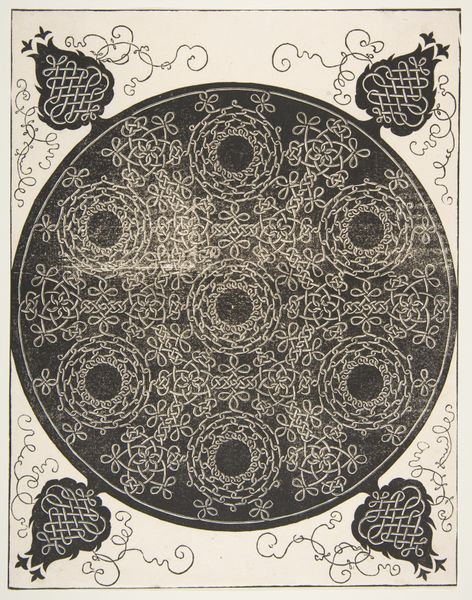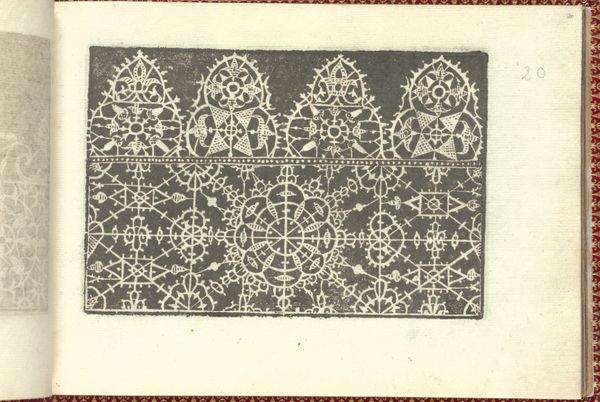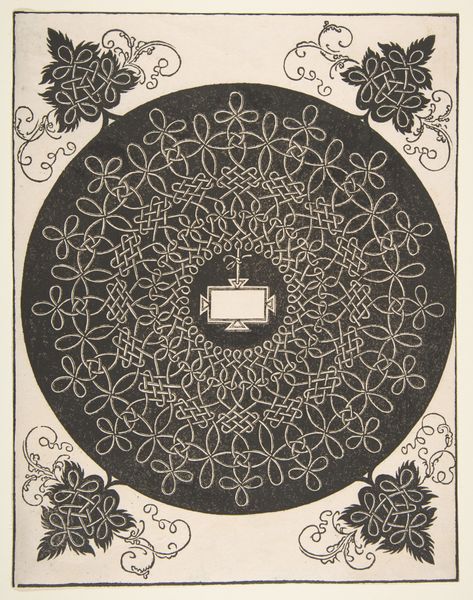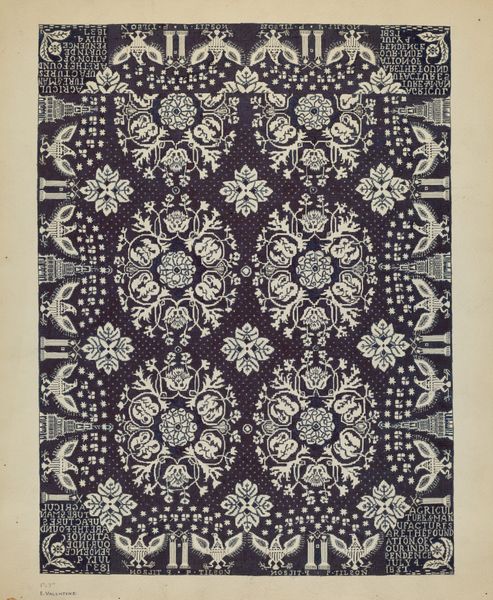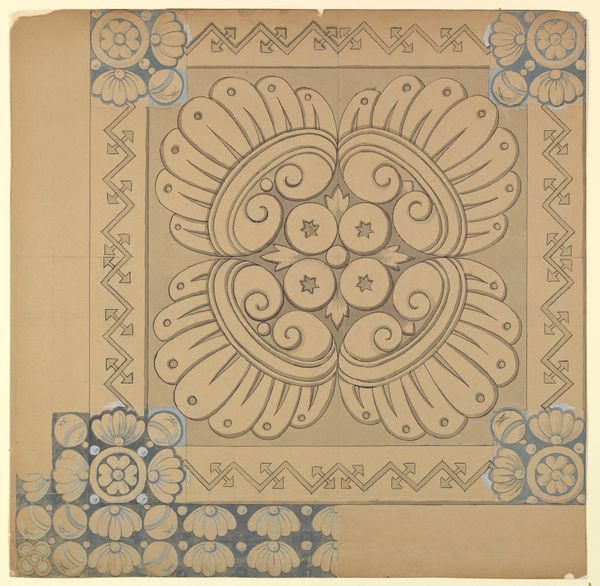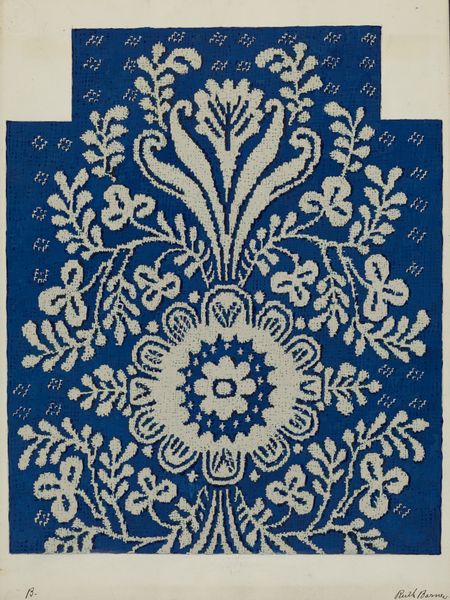
Kantontwerp van een kleed in zespas vorm, in witte inkt op zwart karton c. 1920 - 1935
0:00
0:00
Dimensions: length 20 cm, width 20 cm
Copyright: Rijks Museum: Open Domain
Curator: I’m drawn to the delicate intricacies of this work; the negative space makes the white ink pop. It’s a design drawing by J.H. Pleging-Faber, titled "Kantontwerp van een kleed in zespas vorm, in witte inkt op zwart karton," created sometime between 1920 and 1935. Editor: There’s something gothic and romantic about it. The artist's medium becomes incredibly significant here. I'm curious, using white ink on black cardboard feels so intentional and laborious – a stark departure from the anticipated lace making, in itself a patient endeavor. Curator: The Art Nouveau influence is unmistakable, seen in the stylized organic forms. We read its motifs through archetypal themes relating to textiles and the cyclical symbolism of floral elements that denote continuity. Editor: Yes, absolutely. The materiality hints at a social context too. Was this design destined for luxury or practicality? The material tells of scarcity. Black cardboard of the period would have likely been produced using lower grade pulps. This, set against a highly ornamental purpose feels intentionally rebellious to any conventional design process. Curator: A keen insight. The pattern hints at deeper meanings. Note the hexagonal form – a subtle nod to concepts like harmony, union and balance, key tenets in early decorative arts. Editor: True! I like that you brought up this notion of balance. Perhaps the use of ink here offers the very control she didn’t have with her choice of surface or textiles. I also think about the maker's skill; drawing with white ink allows little room for error! Curator: Perhaps it can stand for something more profound; purity emerging from darkness. Or about labor as something restorative and regenerative. It is both visually striking and thought-provoking. Editor: Precisely. It causes us to consider the values and processes implicit in what would usually be considered an object of simple decoration.
Comments
No comments
Be the first to comment and join the conversation on the ultimate creative platform.
